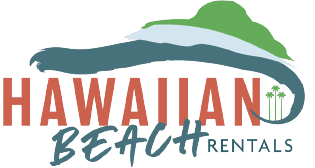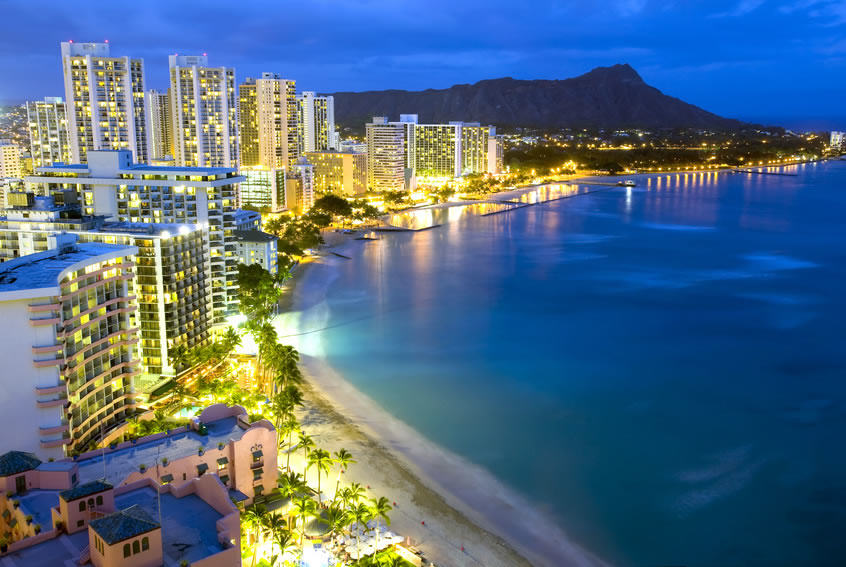Famous Area Is Steeped In History
Today Waikiki is perhaps the most exciting place in all Hawaii. Throngs of people, a multitude of shops and restaurants, great beaches and fabulous surfing waves, affordable oceanfront condominiums and hotels – what more could anyone want?
Waikiki wasn’t always high-rises and high-end shops, however. The area used to be 2,000 acres of marshland that served as a drainage area for the valleys of Manoa and Makiki beneath the formidable Ko‘olau Mountains.
The first Hawaiians who settled in Waikiki slowly converted the fertile marshlands to productive fishponds and taro patches.
King Kamehameha’s huge fleet of 900 war canoes landed on the shores of Waikiki in 1795. Kamehameha’s 16,000 warriors battled about 9,000 Oahu warriors, who were driven up into Nuuanu Valley where many were either driven over the edge of the cliffs at Nuuanu Pali or jumped rather than surrender.
In the early 1900s rice fields dominated the Waikiki landscape, and these were planted mostly by Chinese immigrants who had originally come to Hawaii to work on sugarcane plantations.
Kapiolani Park – dedicated by King Kalakaua to his wife Queen Kapiolani – is located at the eastern end of Waikiki and was used for horse races as well as polo games, musical performances, and other festivities.
Gingerbread-trimmed cottages of the wealthy graced the palm-lined Waikiki beachfront. This was a place not only for Hawaiian royalty – who considered it a place of healing – but also for the wealthy members of Hawaiian society.
Many influential tourists have visited Waikiki including Robert Louis Stevenson who came in 1889 and then again in 1893, both time singing its praises.
The first big hotel to open in Waikiki was the Moana Hotel, which opened with 75 rooms in 1901. Commonly known as the “First Lady of Waikiki, the four-story building was Hawaii’s tallest, and began the rise of Waikiki as a world famous resort destination. In 1916 another 100 rooms were added to the Moana.
Horse-driven tram cars were the preferred mode of transportation until an electric trolley connected downtown Honolulu to Waikiki in 1902, and soon plans were underway to build the infamous Ala Wai Canal and drain the marshes of the area.
In 1927 the Matson Navigation Company built the $2-million Royal Hawaiian Hotel featuring pink turrets, high ceilings, and elegant chandeliers – it came to be known as the “Pink Palace.”
By 1928 the Ala Wai was finished, and the former wetland areas were filled with coral rubble, instantly creating Hawaii’s most valuable property.
Waikiki was now truly a place for the rich and famous to visit. To make this even easier, Matson also built a state-of-the-art cruise ship, the $7.5 million Malolo. Up to 650 passengers could now travel in luxury to the new Hawaii hotel, and guests that came included Henry Ford II, Charlie Chaplin, Douglas Fairbanks, Mary Pickford, Nelson Rockefeller, and Babe Ruth.
The Waikiki Beachboys formed in the 1920s – they were a group of water sports instructors who worked in the area near the big new hotels, the Moana and the Royal Hawaiian, and they helped the wealthy visitors enjoy surfing and outrigger canoe rides in the waves of Waikiki. One famous Beachboy was the legendary Duke Kahanamoku.
The duckponds of the Ala Moana area were also filled in with coral rubble, and in 1934 Moana Park (now Ala Moana Park) was dedicated by Franklin Delano Roosevelt. The Ala Moana Shopping Center opened in 1959, the same year Statehood occurred.
Perhaps this little glimpse back into the early days of Waikiki will help you appreciate the history of this unique and exciting location.
I prefer to rent a condominium right in the heart of it all and then spend many days eating great food, taking in all of the shows and musical performances, and of course just people watching and surfing my days away on the wonderful beaches of Waikiki.

